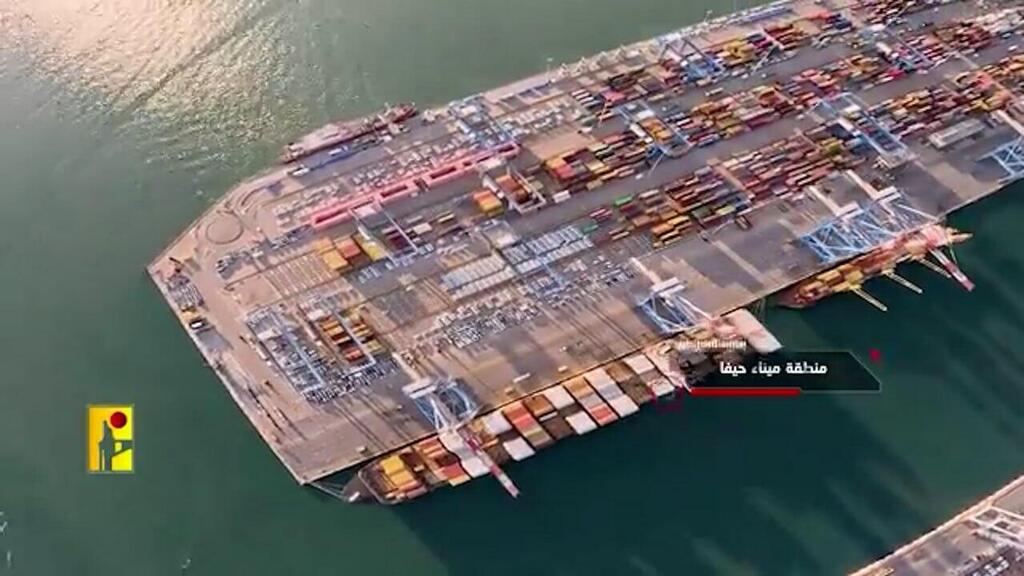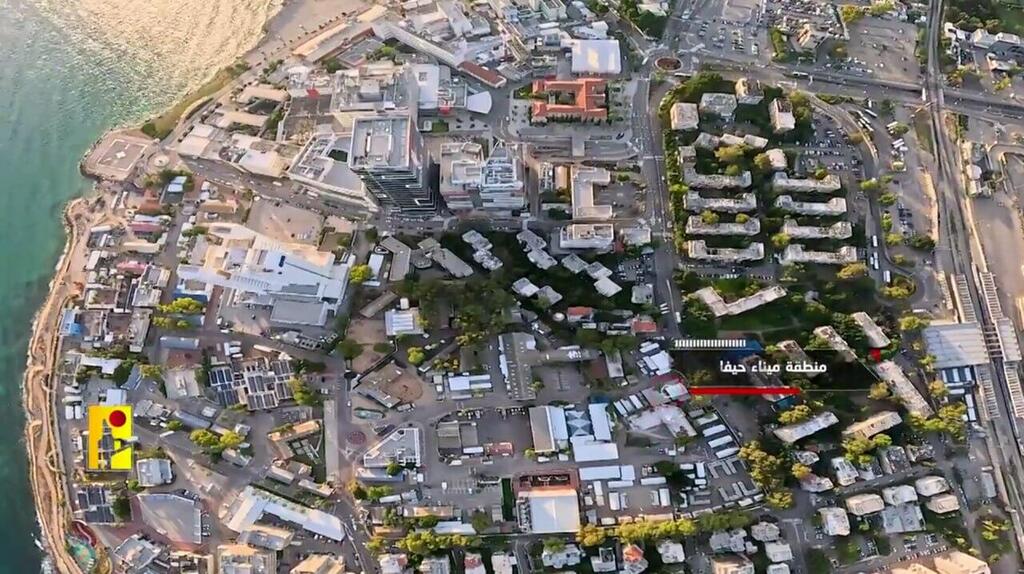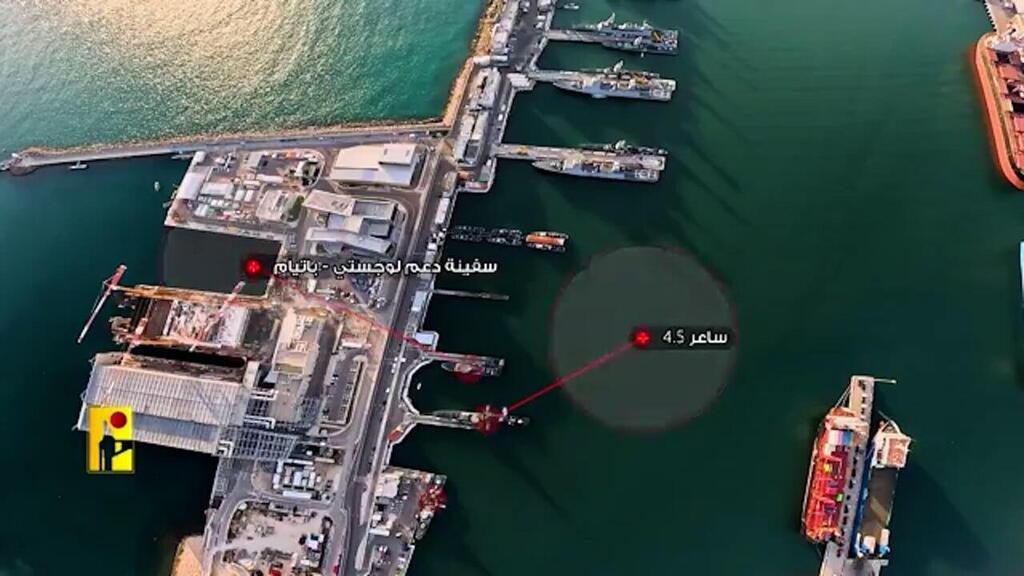Getting your Trinity Audio player ready...
The unusual footage Hezbollah released on Tuesday which allegedly shows strategic assets in the Haifa Port area filmed by a drone codenamed "Hudhud" (hoopoe, the national bird of Israel), raises several questions regarding Israel’s air defense capabilities.
If, as Hezbollah claims, the footage was indeed captured by a drone that infiltrated Israeli airspace and returned to Lebanon, the main issue is how it managed to do so without tripping any warnings or alarms. The footage is nine minutes long, and another important issue it presents is how the drone managed to produce such high-quality, color images of sensitive sites from a relatively low altitude for such a long period of time.
Further, assuming the drone didn’t transmit the material back to Hezbollah in real-time, the question arises as to how it managed to cross back into Lebanon and land intact. It’s also unclear when the footage was taken and whether it was filmed by one or several drones. Putting that aside, the IDF will want to examine the drone's capabilities, which were previously unknown to Israel.
Foreign Minister Israel Katz was the first senior official to comment on Hezbollah's video. "Nasrallah brags about filming Haifa's ports, operated by international giants from China and India, and threatens to attack them. We’re very close to changing the rules of engagement against Hezbollah and Lebanon," Katz said. "In a full-scale war, Hezbollah will be destroyed, and Lebanon will be severely impacted. Israel will pay a price on the front and at home, but with a strong and united people, and with the full force of the IDF, we’ll restore security to northern residents."
Since the beginning of the war in Gaza, the IDF has been dealing with the complex challenge of Hezbollah’s drones. The IDF constantly tries to improve, mainly identification and detection capabilities against them, but false alarms often sound in suspected infiltration of such munitions.
During the months of fighting, the kamikaze drones have caused severe damage when they exploded, sometimes without warning, for example near a group of soldiers and caused damage to strategic IDF bases.
The footage appears to show details about the facilities at the Rafael defense company factory - including Iron Dome batteries, rocket engine depots, David's Slingshot facilities and radar. The UAV also photographed the Savioni Yam neighborhood in Kiryat Yam, apartment towers, a commercial center and a supermarket.
In the part where the Haifa port is photographed, ship hangars, a Naval base and structures that support special units, and the logistics aid ship Bat Yam were recorded.
Sources cited by Hezbollah-owned news outlet Al-Mayadeen claimed that "the video includes three types of targets: military (the military industries complex and the base in Haifa), civilian (residential areas), and strategic (the Haifa Port and its facilities). All types of targets created a deterrence against Israel. Hezbollah wants to say that action against our military, civilian and strategic locations will be answered in the same manner." The sources added the footage was the first released in a series of video clips.
Haifa Mayor Yona Yahav demanded the government establish a comprehensive defense plan for Haifa and find a solution against Hezbollah’s threat. "I wonder why the IDF chief of staff and senior IDF command haven’t bothered to visit Haifa since the start of the war and hear from the municipality about our needs and the military’s required activities to achieve the best protection for the hundreds of thousands of Haifa’s residents," he said.
Hours after the footage was released, the Israeli Air Force reported that air defense systems had identified the drone but decided not to intercept it after recognizing it had no offensive capabilities and fearing a failed interception could endanger residents in the area.
The decision reflects a professional and calculated risk management decision regarding protocols against hostile aircraft.





